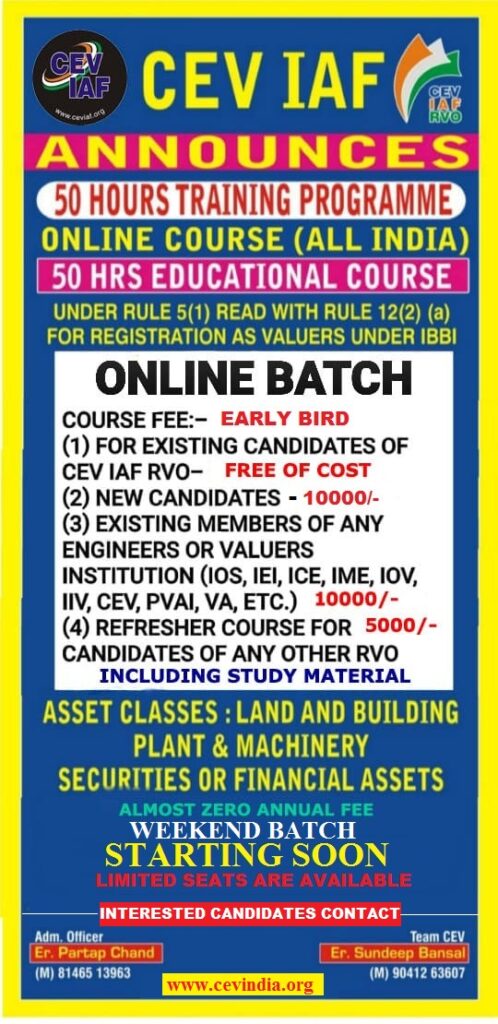METHODS OF VALUATION OF AGRICULTURAL LANDS
Valuation of agricultural lands involves determining the market value or fair value of the land based on various factors such as soil quality, location, accessibility, productivity, land use regulations, and other characteristics that may impact the value of the land. The valuation is important for various purposes, including buying or selling the land, obtaining a mortgage, obtaining insurance, or for tax purposes.
Some of the steps involved in the valuation of agricultural lands are:
- Define the purpose of valuation: The purpose of the valuation determines the approach and methodology used for the valuation. For example, the valuation for tax purposes may require a different approach than the valuation for purchase or sale.
- Collect relevant data: The data collected may include the size and location of the land, soil quality, irrigation, crop yields, and land productivity, land use regulations, and other factors that may affect the value of the land.
- Determine the appropriate valuation method: The appropriate valuation method is selected based on the purpose of valuation and the nature of the property. The methods described above, such as the comparable sales approach, income approach, cost approach, residual method, and hedonic approach, are commonly used for the valuation of agricultural lands.
- Apply the chosen method: The chosen method is applied to determine the value of the land based on the data collected.
- Verify and adjust the value: The value obtained from the valuation method is verified and adjusted if necessary. The value may be adjusted based on market trends, changes in land use regulations, and other factors that may impact the value of the land.
In summary, the valuation of agricultural lands is a complex process that requires a thorough understanding of the property and various valuation methods. It is important to seek the services of a qualified professional for an accurate and reliable valuation.
There are several methods of valuation of agricultural lands. Some of the commonly used methods are:
- Comparable Sales Approach: This method involves comparing the subject property to similar properties that have recently sold in the same or similar area. Factors such as location, soil type, crop yields, land productivity, irrigation, and other characteristics are considered to determine the value of the property.
- Income Approach: This method involves estimating the potential income that can be generated from the property and then calculating its present value based on the expected rate of return. This method is often used for farmland that is rented out for agricultural purposes.
- Cost Approach: This method involves estimating the cost of acquiring similar land and developing it for agricultural use, taking into account factors such as soil quality, location, and accessibility. The value of the subject property is then determined by deducting depreciation from the estimated cost.
- Residual Method: This method involves estimating the value of the land by subtracting the cost of improvements and other expenses from the expected income generated from the property.
- Hedonic Approach: This method involves analyzing the value of the property based on its individual characteristics, such as soil type, water supply, land use, and topography. A statistical model is then used to determine the value of the property based on these characteristics.
The choice of valuation method depends on several factors, including the purpose of the valuation, the nature of the property, and the availability of data. It is often recommended to use a combination of methods to arrive at a more accurate valuation of the agricultural land.
FOR MANY MORE UPDATES AVAILABLE CLICK BELOW
CLICK THE BELOW LINK TO READ THE COMPLETE CONTENTS
SOME CONTENTS OF THIS WEBSITE ARE FOR GOLD SUBSCRIBERS ONLY.
Join us as a GOLD SUBSCRIBER and get access to read important books.
KIND ATTENTION
We are going to close all what’s groups of CEV soon due to difficulties in posting information or message in more than 5 groups of CEV at a time.
All future posts of empanelment notices & professional importance will be shared on
1. https://t.me/+dbHNkNO22xsyYTY1
2. www.valuerworld.com
3. The Twitter handle of CEV India
https://twitter.com/cevindia?t=XbqlvnwUVz1G3uPgs749ww&s=09
after closing the groups.
All members of these groups are requested to register themselves at the following link immediately for Getting all related timely updates.


